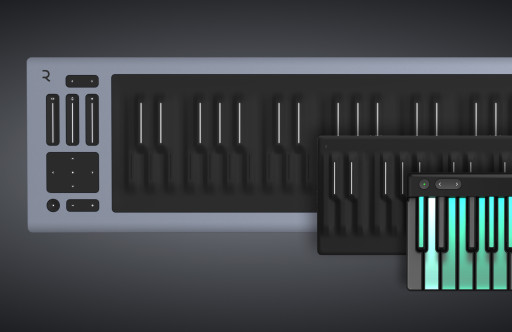Starsky Carr has made a name for himself in the synth community, with nearly a decade of trusted gear reviews, demos, walkthroughs, and how-tos on YouTube — all delivered in his distinctive Liverpudlian accent. He’s also an accomplished musician, producer, and remixer in his own right, having worked with iconic British labels like Mute, Distinctive, and 3Beat.
In this recent video, he gives a quick overview of Seaboard RISE 2, shows us around the included Equator2 soft synth, and then delves into the process of connecting his controller to three very different MPE-compatible hardware synths — the Synclavier Regen, Groove Synthesis 3rd Wave, and Sequential OB-6.
If you’re not yet familiar with RISE 2, or just need a recap, here’s a crash course in the basics. Starsky dedicates the opening of the video to a quick overview of the hardware and highlights some of the upgrades we’ve made since the original Seaboard RISE.
For a full account of the differences between Seaboard RISE and RISE 2, check out our own guide here.
Our powerful MPE soft synth Equator2 is included with every Seaboard RISE 2, and the two are designed to work perfectly in tandem. Here, Starsky gives us a whistle-stop tour of the interface, and takes a look at some of the included synth engines. There are four to choose from, and up to six instances of these can be layered in any one patch!
Of course, MPE is where Equator2 really comes to life, and Starsky demonstrates this by playing with a selection of the extensive modulation options on offer and adjusting their behavior with Equator2’s modulation panels and RISE 2’s on-board controls.
If this all sounds a little overwhelming, just know that Equator2 comes complete with more than 1,400 professionally designed presets. Over 500 of these are also MPE compatible, so they’ll work seamlessly with RISE 2, right out the box.
Synclavier Regen
Back in the 1970s, the Synclavier name was synonymous with innovation — and its legendary instruments were coveted by players of all levels. Today, its spirit lives on with Synclavier Digital’s Regen desktop synthesizer, which features MPE compatibility and makes an excellently expressive pairing with Seaboard RISE 2.
Here, Starsky walks us through the process of making the two work together as seamlessly as possible. To get the most musical results, it’s often useful to adjust the curves used to modulate parameters, as we saw with Equator2. Thankfully, the Regen makes this relatively straightforward, displaying said curves on its own color display.
Once everything is set up, it’s time to get hands-on and play with some patches. Starsky demonstrates the benefits of MPE control beautifully here, showing us how we can intuitively control LFO rate with RISE 2’s Slide gesture, and then go one step further by having it speed up on one note while simultaneously slowing down on another.
Groove Synthesis 3rd Wave
Moving on to Groove Synthesis’s 24-voice wavetable synth, 3rd Wave, Starsky demonstrates the equivalent process. With an enormous amount of timbral variety possible via modulation, wavetable synths like this one are a particularly good match for RISE 2.
Just like the Regen, the 3rd Wave features an MPE mode, and switching it on is simple enough. We don’t have access to modulation curves on the synth itself, however. Instead, we turn here to the ROLI Dashboard software, included with RISE 2. This simple app allows you to customize and fine-tune the way the controller interacts with your other hardware or software.
For a more in-depth look at using the 3rd Wave with RISE 2, take a look at Starsky’s dedicated video here.
Sequential OB-6
Another legendary name from the history of synthesis, Sequential has become one of MPE’s staunchest supporters in recent years, adding support to existing hardware via firmware updates and including it in many of their newer creations from launch. One synth in the former category is the OB-6, which launched in 2016 and was updated with MPE support in 2021.
As Starsky notes, the OB-6 is a six-voice analog synthesizer — you can play up to six notes at any one time. MPE, by definition, transmits MIDI data on several different channels at once (which is how, for example, we’re able to bend one note from a chord without affecting the others). In the case of the OB-6, and other synths with limited voice counts, we’ll want to make sure that the RISE 2 is transmitting on an appropriate number of MIDI channels. This avoids situations where a key is pressed without triggering a note.
Again, as Starsky shows us, this is easily accomplished in ROLI Dashboard. Simply dial down the number of channels in the MIDI Settings panel and you’re ready to play.
“It really does breathe life into instruments that have MPE capability,” says Starksy of the RISE 2 (and we agree, of course). “I never really got it much before — people have complained about new synths not having MPE keyboards. And now I get it because you get so much control, so much emotion you can put into something… especially if you're doing compositions for soundtracks and classical things.”
Discover Seaboard RISE 2
Discover Equator2
Find more of Starksy Carr on YouTube, Instagram, and Patreon.



